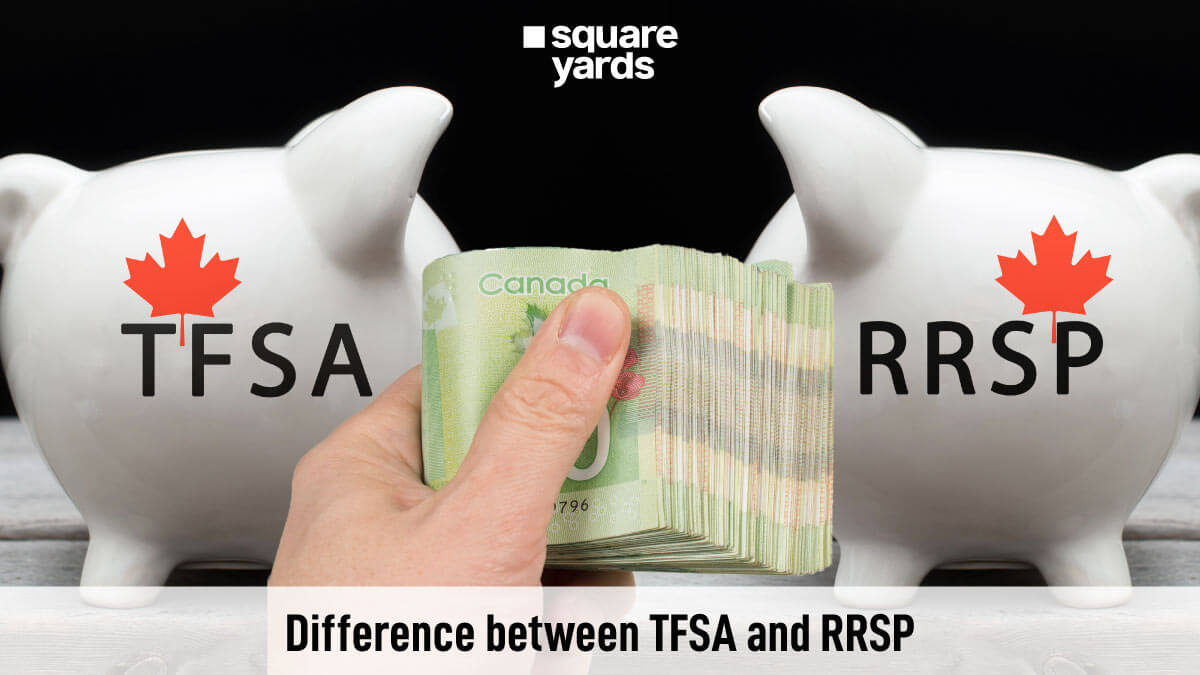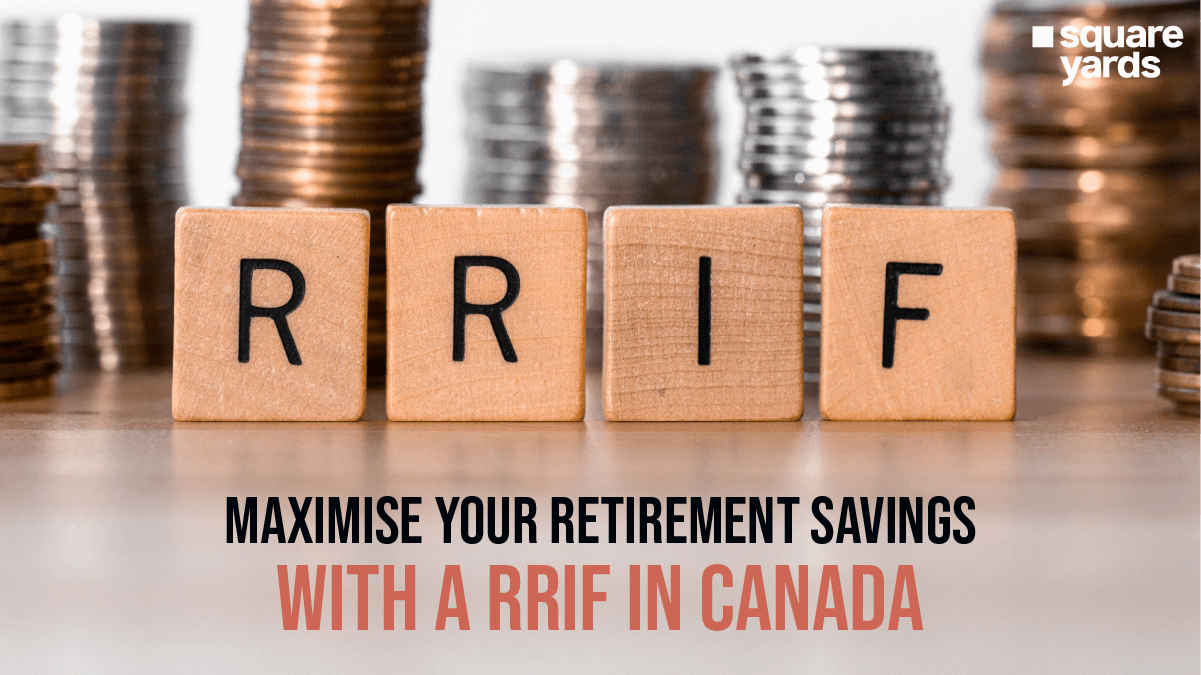The most commonly used options to save while you’re merely getting started are TFSAs vs RRSPs. And “What is the major difference between TFSA vs RRSP accounts?” and “Should I pick an RRSP or TFSA?” are the two most commonly asked questions about investments. It is no secret that both schemes provide tax benefits and potential for growth. Making the most of your earnings will depend on how well you comprehend the differences you’re about to learn in detail.
How Do TFSA Work?
Any Canadian resident who is 18 years of age or older may open a TFSA (also known as a tax-free savings account) and use it for simple savings or even to store investments. It can include assets like bonds, stocks, cash, guaranteed investment certificates, or GICs, and exchange-traded funds, or ETFs.
Regardless of whether it is cashed, any income gained in the account holder’s possession is tax-free. This implies that any interest, stock dividends, and capital gains made in your TFSA are tax-free. However, unlike RRSP investments, your TFSA investments won’t lower your tax liability on your income.
There is an annual limit to the total amount of funds you can deposit into your TFSA. However, the excess contribution limit may be carried over to the current lifetime maximum. You receive a TFSA allocation of about $6,000 every year, which implies you can contribute that sum plus any carryover from prior years.
So the real question is, how does a TFSA avoid taxes? You put an amount into a TFSA account from your net earnings, resulting in no tax relief while contributing to the sum because the funds you deposit into this account have already been taxed. But since no capital gains tax is applied to profits made in a TFSA, whether from a savings account, a high-growth index fund, or another investment product, you won’t have to pay taxes on your earnings when you remove them. Additionally, any profits you realise from those assets won’t reduce your ability to make contributions this year or in the future. In essence, you don’t pay taxes on the income you receive from your TFSA.
How Do RRSP Work?
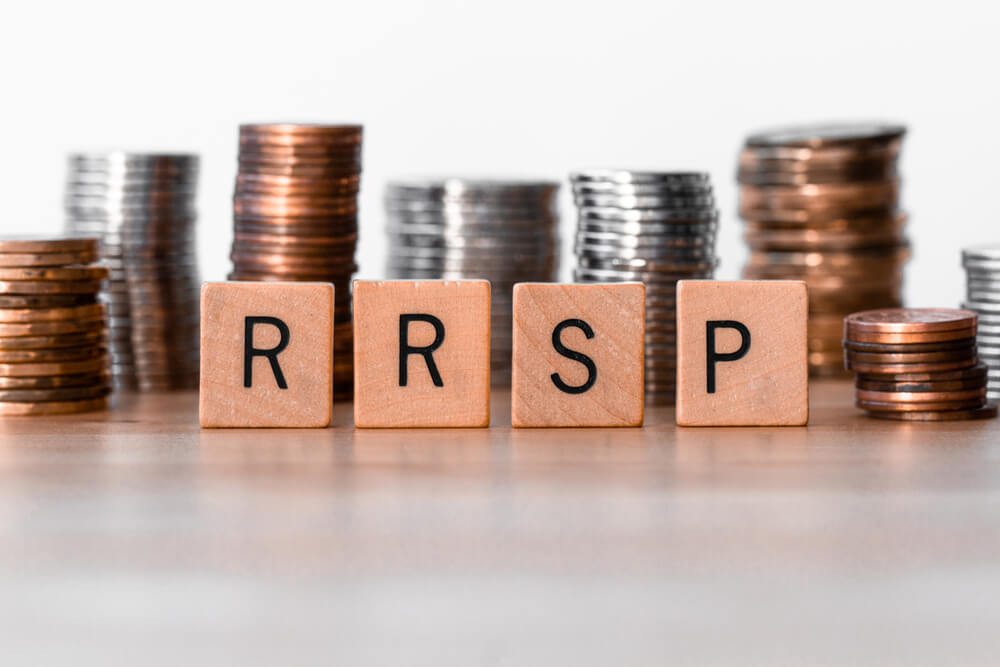
Similarly to a TFSA, an RRSP, or a registered retirement savings plan, it allows for the holding of both investment assets and savings. This account offers you the opportunity to make large annual contributions, and depending on the amount you donate, it lowers your tax liability. An RRSP enables you to postpone taxes while also saving money for retirement. The maximum RRSP contribution for 2021 is $27,830, $27,230 for 2020, and $26,500 for 2019.
It’s crucial to keep in mind that whenever you withdraw this money, you will owe tax on it. Once you reach the age of 71, you have to convert your RRSP into an RRIF, or Registered Retirement Income Fund from which you can withdraw your retirement savings since you will no longer make contributions to your RRSP. You’ll have to start paying taxes on the funds you contributed at this point. The theory is that since you deposited in an RRSP, you will be charged less overall tax as a result of being in a lower tax bracket as a retiree than you were during the high-earning days.
The Comparison : TFSA or RRSP?
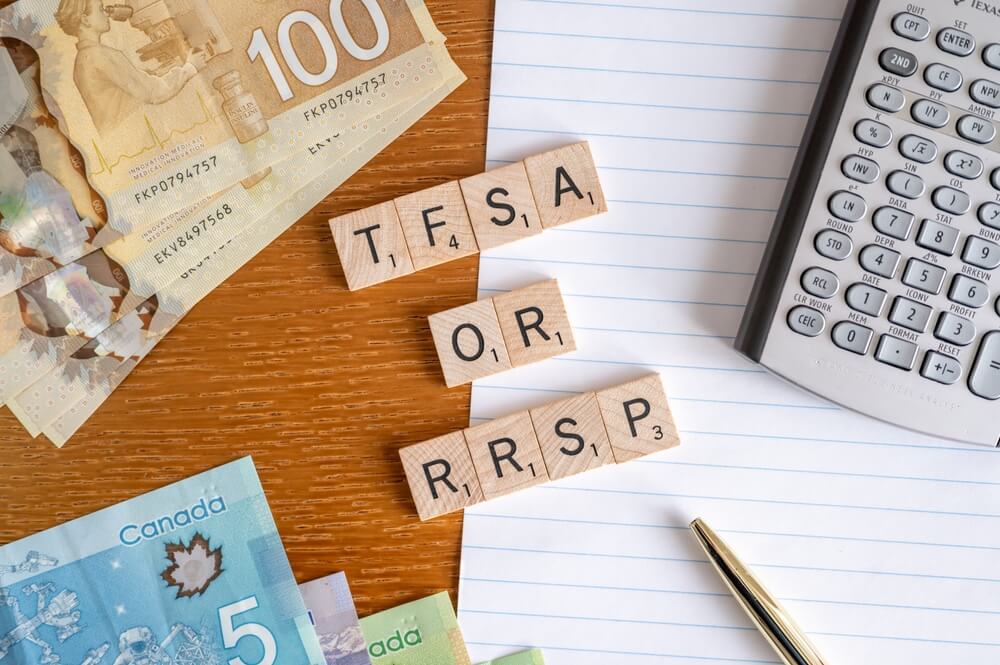
Ultimately, comparing your present marginal income tax rate with the rate of tax you anticipate paying in retirement is indeed the best approach to deciding between an RRSP vs TFSA. Although it requires some planning and maths, doing this can result in significant financial savings.
Get an idea of the kind of retirement lifestyle you wish to lead first. Would you like to travel, acquire new skills, or pursue hobbies? Instead, are you satisfied with keeping your existing standard of living the same or lowering it? Secondly, make an estimation of the annual cost of both your retirement benefits and your usual living costs. Third, find out how much tax you’ll have to pay after you’ve gotten an estimate of your yearly retirement savings needs.
Don’t forget to account for both provincial and federal taxes. Do you anticipate having the following taxes compared to your existing tax rate? For example:
-
- Reduced tax rate in old age? Consider starting with an RRSP.
- Retirement tax rates that are higher? Starting with a TFSA might be a good idea.
- Retirees taxed at the same rate? Even if you’re not making the most of your yearly contribution limit, you might wish to begin with something like a combination of both.
Account Features Comparison Between TFSA vs RRSP
Would you rather save money now and benefit from a tax cut later? Both TFSAs and RRSPs provide tax benefits that can assist you in meeting your investment and saving objectives, which is ideal for you!
The reality is that it’s not always obvious how to preserve your income, but your savings strategy can incorporate either a TFSA or an RRSP, or even both. However, it’s critical to comprehend their differences if you have to pick one over the other. Here are a few crucial factors to help you choose the best course of action.
-
- Key Use – Retirement savings are the main purpose of RRSPs. TFSAs are frequently used to save money for various goals.
- Eligibility – Once you begin receiving earnings from a job or other specific sources, you are eligible to deposit to an RRSP. You need to be of legal age in your state or province of residence to register for a TFSA with TD.
- Contribution Cap – The TFSA investment cap for 2022 is $6,000 per year. On the other hand, subject to some modifications, your 2021 RRSP investment cap is equal to the lowest of 18% of the income you earned that is mentioned on your previous year’s tax return or $27,830.
- Unused Contribution Room – For RRSPs vs TFSAs, the excess contribution limit is carried forward.
- Withdrawals – Withdrawals from an RRSP are taxed, with some exceptions. You can take money out of a TFSA at any given time, tax-free!
- Withdrawn Amounts – According to certain limitations, when you remove money from an RRSP, the ability to contribute is lost for the sum you withdraw. Withdrawals from a TFSA are put back on your available contribution limit the subsequent year.
- Taxation – TFSA contributions aren’t tax deductible. Contributions to RRSPs are tax deductible. Therefore, any payments you make might lower the amount of personal income taxes that you have to pay.
- Plan Maturity – At the conclusion of the year when you reach the age of 71, an RRSP matures. A TFSA can be opened at any age.
- Spousal Plan – You can make direct contributions to a spouse’s RRSP. No spouse can open a TFSA.
How To Choose Between TFSA vs RRSP?
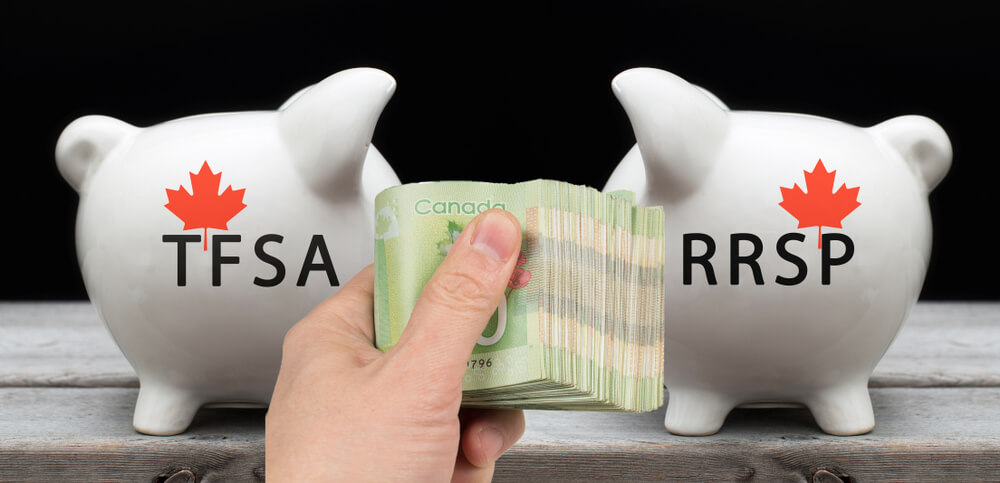
The most suitable investment option for you will depend on your unique financial circumstances and objectives. Remember that with an RRSP, you receive a tax return now for the amount you give but will be required to pay the tax eventually whenever you make withdrawals from the programme.
In contrast, with a TFSA scheme, you pay tax on the money you’ve earned even before the contributions you make. Making the best choice for your investment capital will depend on a number of criteria, including this difference, your income, your timeframe for investing, and others. You might discover you are able to use both vehicles at once. So, which should you invest in more—your TFSA or your RRSP?
-
Income and Tax Bracket
Which investments are the most profitable for you is heavily influenced by your earnings, taxable income, and the percentage of taxes you must pay. Generally speaking, individuals who earn over $50,000 a year would be advised to deposit in an RRSP. This is due to the fact that the money you invest is taxable income, and your reductions help to lower the amount you owe. The exemption is less advantageous for people who earn only about $50,000 per year since, after receiving the essential tax incentives, you probably won’t owe a lot in the way of income tax.
-
Time Horizon
Whenever you make investments, it’s a smart idea to specify your goals. Retirement savings typically take longer to accumulate than a house makeover or your child’s college fund. The funds in your RRSP are set aside for future retirement. The scheme is set up to ensure that once you remove the money, you will then be receiving less and, as a result, be in a lower income tax band, which will result in a lower annual tax payment. Although this serves the original purpose well, it won’t assist you in achieving your short or mid-term objectives. A TFSA may be more advantageous in this situation because withdrawals are tax- and penalty-free. It would be simple and tax-free to withdraw funds from a TFSA to, for example, purchase a car.
-
Group Plans
Investing in an RRSP might be comparatively more advantageous than normal if your company matches your contributions to a collective RRSP or a similar income account, such as a defined contribution or DC pension plan. Employer contributions often function as a proportion of your salary being matched by your employer if you deposit the same percent, or a portion of your contribution sometimes dollar for dollar. This unclaimed cash is a guaranteed profit on the money that is virtually unachievable through investing.
So now the question, which one? RRSP or TFSA? Spreading out your earnings and making contributions to both is ideal. Due to the tax system, you’ll probably end up with the same amount of money whether you opt for the RRSP, TFSA, or both. The most crucial step is to begin saving right away and to consistently make TFSA vs RRSP payments. When it comes time to retire, you can be confident that you are prepared completely.
You May Also Read :
| Know About Canadian Banking System | Canadian Banking System |
| All About Non-resident Canada Tax | Non-Resident Canada Tax |
| Finance and Banking In Canada | Banking In Canada |
| All About Chequing Accounts in Canada | Chequing Accounts in Canada |
Frequently Asked Question (FAQs)
Is it better to invest in TFSA or RRSP?
nvesting in a TFSA or RRSP completely depends on your individual financial situation and your needs. Choosing the best option to invest in depends on various criteria, which include your income, the time period you are investing for, and a few other factors.
How much can I save with a TFSA?
From the year 2016 until 2018, the TFSA's yearly dollar cap was $5,500. From the year 2019 onwards, the yearly TFSA contribution cap was set at $6,000.
What is a Lifelong Learning Plan (LLP)?
The LLP permits individuals to take out the amount of $10,000 from their (RRSPs) in a financial year to pay for full-time education or training for themselves, their spouse, or their common-law partner.
What is the income tax bracket in TFSA?
From 2019 up till now, the yearly TFSA contribution cap is set at $6,000. The annual space limit for TFSAs will be rounded up to about $500 and adjusted with inflation.

